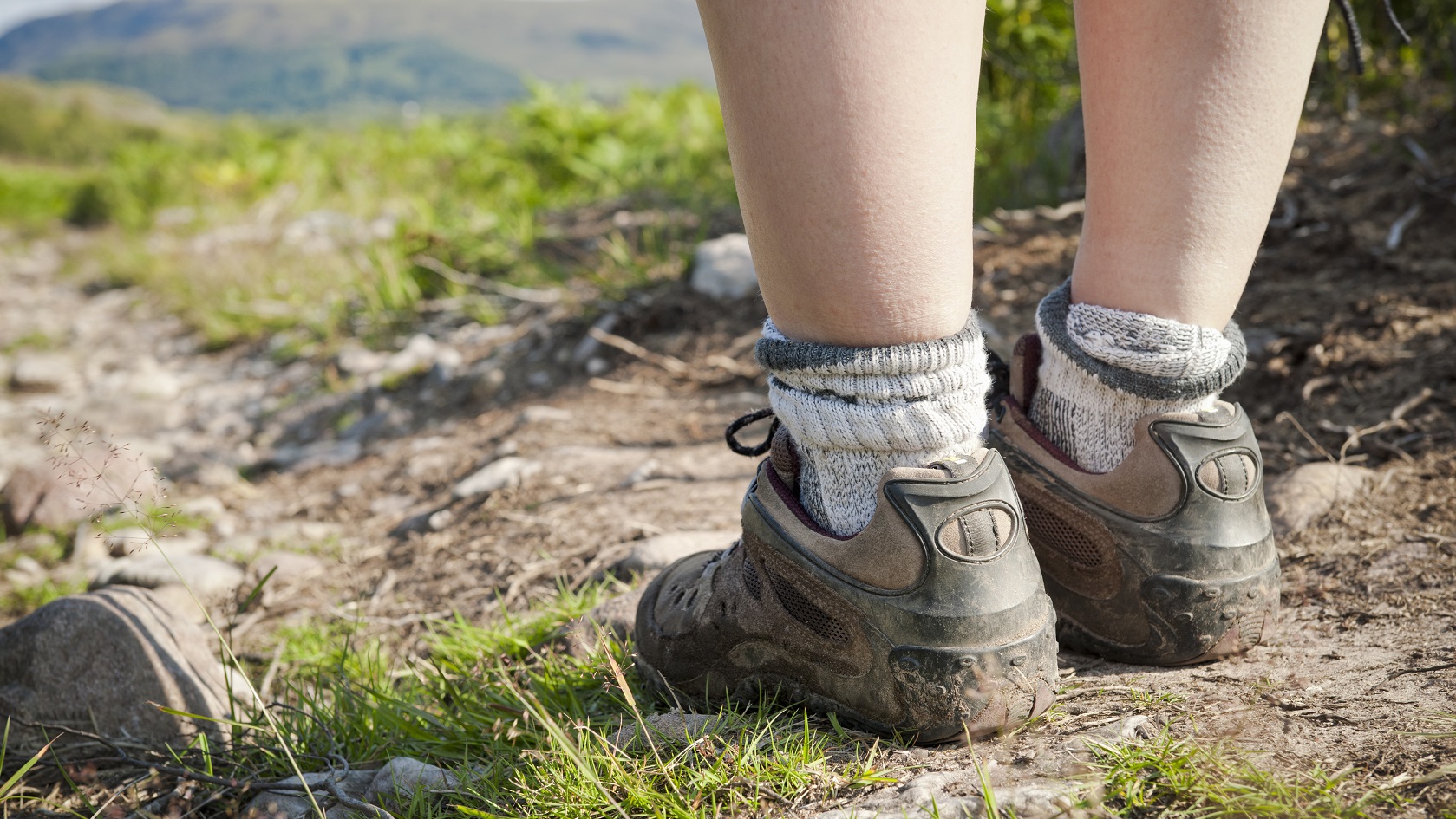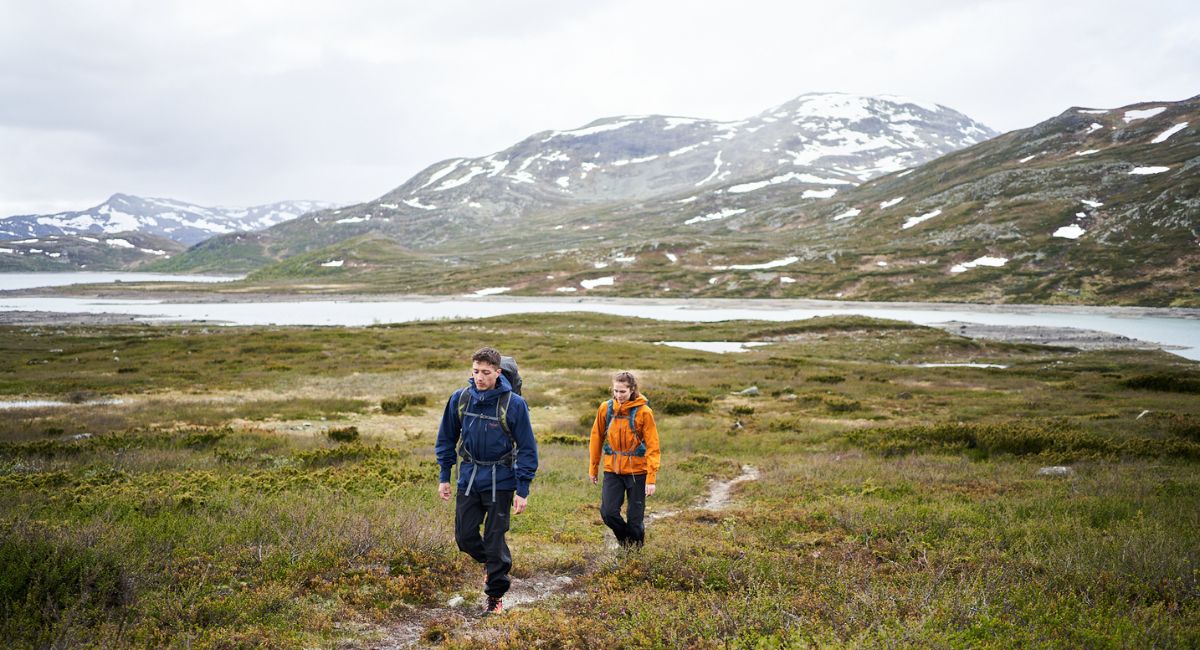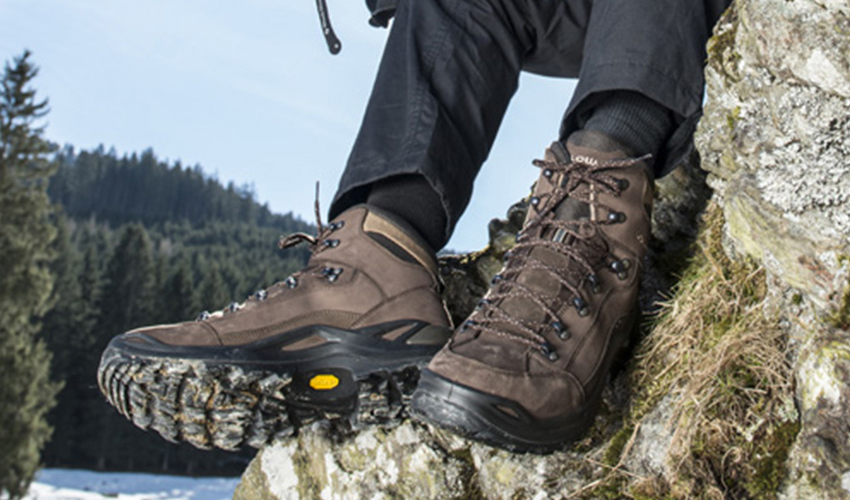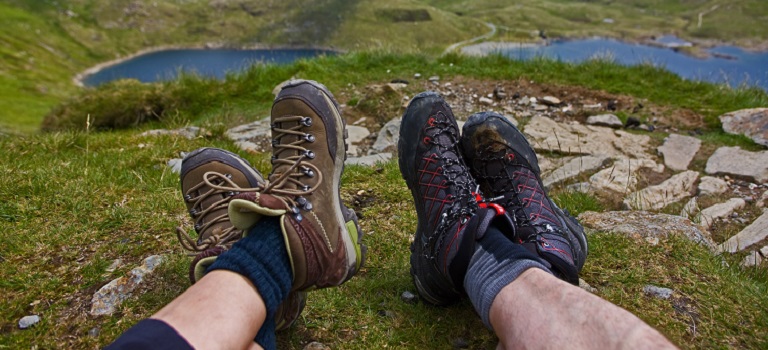Top Tips For Preventing Blisters
Whether it’s in a casual pair of shoes on a day long trek, or hiking for hours with no alternative footwear, most of us have experienced the wincing step-after-step pain of a blister. However, it’s important to note that blisters are not normal.
What Are Blisters and How do they Form?
Blisters occur due to poorly fitting footwear, or when feet are warm and damp and begin to rub against your boots. Your skin naturally reacts by forming a pocket of fluid under the damaged layer of skin, cushioning the tissue underneath. With the right fit and the right socks, you shouldn’t get them at all.
Read ahead for a few simple blister prevention tricks in preparation for your next trek to know and understand how to stop and treat a blister mid-trek:
Finding The Right Fit
Proper Shoe Fit: A Step-by-Step Guide
- Toe Box Space → Ensure a thumb’s width between toes and shoe end.
- Heel Lock → Heels should stay snug without slipping.
- Width → No side-of-foot pressure.
Pro Tip →The first, and most important, step is to make sure that your footwear fits properly. Visit any of our stores for a Free Boot Fitting Service with one of our in-store experts, or check out our Boot Fitting Guide for more help with online orders.
Breaking In New Footwear
- Wear new shoes indoors for 1–2 weeks before long hikes.
- Use Leukotape on potential hot spots during the break-in period
Once you have correctly fitting boots, make sure you tie your laces properly as this can often make the difference in securing your feet and ensuring your boots aren't rubbing.
Choosing The Right Socks

Avoid cotton socks as these tend to hold moisture next to your skin, which combined with friction causes blisters. Instead, choose a moisture wicking pair of polyester or wool socks like Bridgedale or Smartwool.
Alternatively, you could try a thin pair of merino wool or polyester liner socks, with a second pair of thicker socks over the top. Whether you wear one pair of socks or two is down to personal comfort. However, it’s important to consider the thickness of your socks in relation to the fit of your footwear, as they can change the volume of your foot. You should also consider the level of insulation the sock you choose offers.
Top Tip: Wool and synthetic socks do a great job at moving sweat away from your feet, but you can always pack a spare pair of socks with you and swap them should your feet get wet.
For more help, read our Sock Buying Guide.
| Fabric Type | Pros | Cons |
|---|---|---|
| Merino Wool | Moisture-wicking, odor-resistant | Longer drying time |
| Synthetic (Nylon/Polyester) | Quick-drying, lightweight | Less durable |
| Double-Layer | Reduces friction between layers | Can feel bulky |
Plasters: Using the Best Protection for Blisters

Plasters play a crucial role in both blister prevention and treatment, especially during long walks, hikes, or when breaking in new shoes. Understanding the types and correct usage can make a significant difference in comfort and healing.
Hydrocolloid Plasters: The Gold Standard
Hydrocolloid plasters, such as Compeed and Scholl, are specifically designed for blister care and prevention. They contain active gel particles that absorb wound exudate, creating a moist environment that speeds up healing while cushioning the area to relieve pressure and pain.
- How They Work → Hydrocolloid technology maintains optimal moisture, absorbs excess fluid, and swells to provide a protective cushion. This not only relieves pain instantly but also protects the blister from further friction and contamination.
- Adhesion and Durability → These plasters are highly adhesive, flexible, and waterproof, staying in place for several days-even during showers or swimming-so you don’t have to change them frequently.
- Second Skin Effect → Their tapered, translucent edges blend with your skin and flex with movement, acting as a ‘second skin’ for seamless protection.
Standard Plasters vs. Hydrocolloid Plasters
Ordinary plasters provide basic coverage but lack the advanced cushioning, moisture management, and long wear time of hydrocolloid plasters. Studies consistently show that hydrocolloid plasters outperform standard options for pain relief, healing time, and user satisfaction.
Moisture Management: Keeping Feet Dry
Managing moisture is a cornerstone of blister prevention, as dry skin reduces friction and lowers the risk of blisters forming. However, keeping feet truly dry inside socks and shoes-especially during exercise or in warm weather-can be challenging. Here are the most effective, research-backed strategies to manage foot moisture and minimise blister risk:
Change Wet Socks and Shoes Promptly → Switch out of damp socks and shoes as soon as possible. Prolonged exposure to moisture increases friction and softens the skin, making it more susceptible to blisters
Choose Moisture-Wicking Socks → Opt for socks made from technical fabrics like merino wool or synthetic blends. These materials draw moisture away from the skin, keeping feet drier and reducing friction. Double-layer socks or toe socks can further help, especially for interdigital (between the toes) blisters.
Ventilated Footwear → Shoes with breathable mesh uppers allow heat and moisture to escape, creating a cooler, drier environment for your feet.
Use Foot Powders → Foot powders absorb sweat, cool the skin, and reduce the burning sensation that can precede blisters. Apply powder to clean, dry feet before activity, and dust off excess before putting on socks. Powders are also useful for dusting the adhesive edges of plasters and tape to prevent sticking to clothing.
Apply Antiperspirants → Specialist foot antiperspirants or even regular roll-on deodorants (such as Nivea Pure Invisible) can be applied to feet to reduce sweating and friction. This viral hack is especially useful for new shoes or during hot weather
Shop Our Outdoor Footwear Range
To check out more from our footwear range, click below to shop the entire collection...
FAQs
Double-layer synthetic/wool blends (e.g., Hilly Twin Skin) reduce friction by 40%
Use Leukotape on shoes’ interior seams and break in footwear gradually.
Only if necessary-sterilise tools and keep the roof intact to prevent infection.
Related articles

Let us know you agree to cookies
We use marketing, analytical and functional cookies as well as similar technologies to give you the best experience. Third parties, including social media platforms, often place tracking cookies on our site to show you personalised adverts outside of our website.
We store your cookie preferences for two years and you can edit your preferences via ‘manage cookies’ or through the cookie policy at the bottom of every page. For more information, please see our cookie policy.






